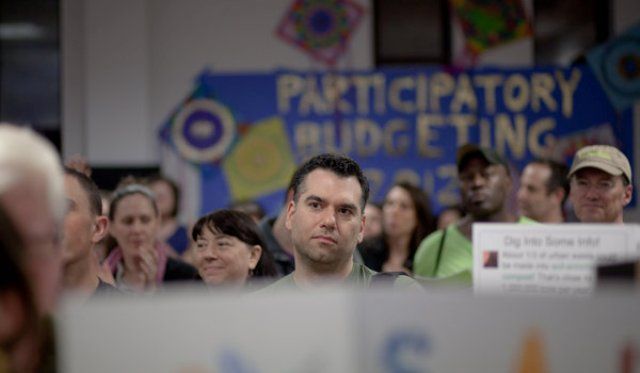What Would You Do With One Million Dollars?


Photo via Eric Michael Johnson/NY Times
I was completely oblivious to the comings and goings of politics until my senior year of high school. Peggy McCarty, my government teacher, brought such passion to the subject and opened my eyes to the possibility that I could make a difference in the way elected officials run, not only our local community, but the country as a whole. For a shy kid on the cusp of adulthood, this was extraordinarily empowering.
Flash forward fifteen years (egads) and I’ve become quite disillusioned with the state of politics. It’s difficult to see how any progress can be made to repair our broken system when both sides spend more time spewing vitriol than focusing on what the American people actually need. Perhaps it was naivety, but that 18-year-old kid back in Garland, Texas never imagined the government would end up being oblivious of me.
Brad Lander, NYC Council Member for Brooklyn’s 39th District (which includes Park Slope), is looking to change this image with something called participatory budgeting. For the second year in a row, he’s asking constituents how they would like to spend one million dollars of his discretionary budget to better the community. According to non-profit organization The Participatory Budgeting Project, the process follows five basic steps:
- Residents identify local priority needs, generate ideas to respond to these needs, and choose budget representatives for each community.
- These representatives discuss the local priorities and develop concrete projects that address them, together with experts.
- Residents vote for which of these projects to fund.
- The government implements the chosen projects.
- Residents monitor the implementation of budget projects
A recent email from Lander notes that last year’s “experiment” attracted more than 3,000 participants and received almost 1,000 project submissions. Of those submissions, 7 ultimately received the community votes needed for funding:
- Renovation of two dysfunctional bathrooms at PS 124 ($150,000, 958 votes)
- Innovative community composting system near Gowanus Canal to turn 1 ton/day of food waste into soil ($165,000, 919 votes)
- Planting 100 new trees on blocks throughout the district with few or no trees ($100,000, 767 votes)
- New technology for PS 130 and PS 154 ($140,000, 758 votes)
- Repairing Prospect Park pedestrian paths to prevent flooding, and adding trash cans in the park ($205,000, 648 votes)
- Repairs and safety improvements at the dangerous Prospect Expressway/Church Avenue pedestrian crossing ($200,000, 606 votes)
- New books and equipment for the Kensington public library to enhance the branch’s use for meetings, storytelling, rehearsals, and small performances promoting Kensington’s cultural diversity ($80,000, 582 votes)
Don’t think that you have to be a die hard political activist to participate, either. As the New York Times reported last April:
Participatory Budgeting is as much about involving disenfranchised members of the public as it is about financing projects, and the elections were intended to draw maximum participation. People did not have to be registered to vote to cast ballots, and citizenship status and prior criminal convictions were irrelevant.
Not much appears to be changing this year with regard to the process, but Lander is tossing in a twist for the younger residents. During the community assemblies, kids between the ages of 12-18 will branch off and discuss project ideas among their peers. Better yet, community members over the age of 16 will be allowed to vote on the final projects.
So, Park Slope, are you ready to get involved? The first assembly meeting in the Slope will be held at 6:30pm on Wednesday, October 3 at the Greenwood Baptist Church (461 6th Street at 7th Avenue). RSVP instructions can be found on Brad Lander’s website.